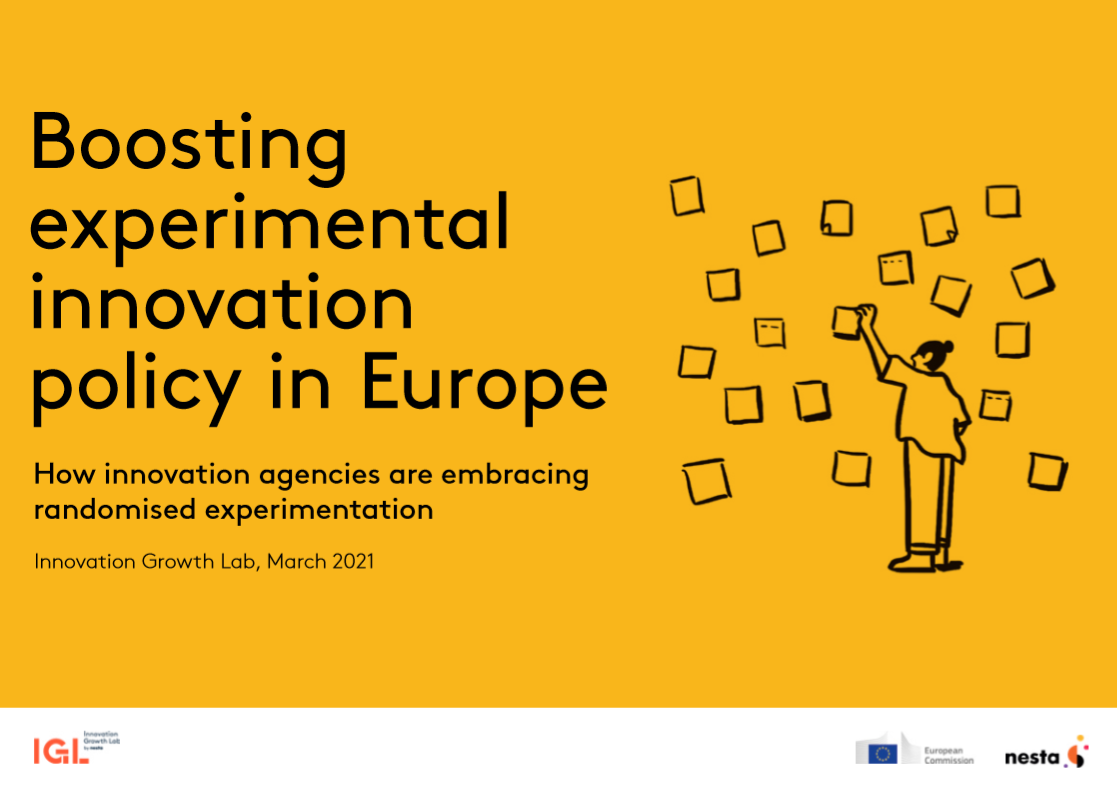Download the full brief
Innovation policymakers face a complex and continuously evolving system and have limited evidence on how to most effectively influence it. This can be addressed by turning the current model of policymaking upside down through experimentation.
The European Commission launched the first dedicated call for randomised experiments as part of the Horizon 2020 Work Programme. Thirteen projects received funding, with 27 agencies involved, from Lithuania to Spain. You can read more about our first phase of support in this short report.
Enabling conditions to experiment
This shift to becoming experimental has not always been easy. We spoke to the agencies to understand the enabling conditions for experimentation, collating these under two factors: openness and capabilities to experiment.
- An agency’s openness to experiment refers to its willingness to learn, being open about uncertainty and the use of randomised experimentation as a form of policy design and evaluation.
- An agency’s capabilities to experiment refer to the specific skills and resources that an agency needs to experiment.
Levels and progression of openness and capabilities are not synchronised. Through our work with innovation agencies across Europe and beyond we have observed different combinations of openness and capabilities to experimentation.
What steps should innovation agencies take to carry out experimental projects?
Even with the necessary willingness and infrastructure, running RCTs can be challenging as agencies need both the intervention and evaluation to work in tandem.
In order to help innovation agencies avoid similar problems in the future, we present a spiral that seeks to describe the experimentation process, showing how to develop a policy experiment and avoid the risk of moving too soon.
What can you find in this brief?
This brief describes how innovation agencies can embrace randomised experimentation. Learning from the experience of the agencies that participated in this novel EU-funded programme, we introduce factors to measure the agency's openness and capabilities, as well as strategies to make successful progress on both levels.


